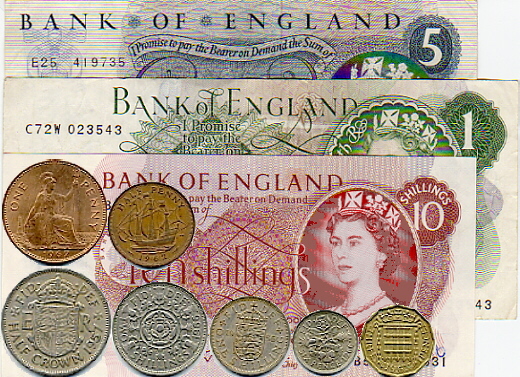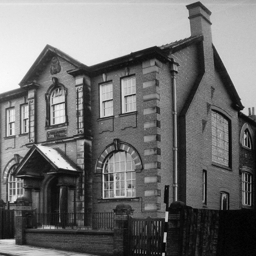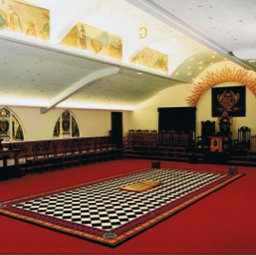Pre-decimal currency
£sd (pronounced ell-ess-dee and occasionally written Lsd) is the popular name for the pre-decimal currencies once common throughout Europe, especially in the British Isles and hence in several countries of the British Empire and subsequently the Commonwealth. The abbreviation originates from the Latin currency denominations librae, solidi, and denarii. In the United Kingdom, which was one of the last to abandon the system, these were referred to as pounds, shillings, and pence (pence being the plural of penny).

This system originated in the classical Roman Empire. It was re-introduced into Western Europe by Charlemagne, and was the standard for many centuries across the continent. In Britain it was King Offa of Mercia who adopted the Frankish silver standard of librae, solidi and denarii in the late 8th century, and the system was used in much of the British Commonwealth until the 1960s and 1970s, with Nigeria being the last to abandon it with the introduction of the Naira on 1 January 1973.
Under this system, there were 12 pence in a shilling and 20 shillings, or 240 pence, in a pound. The penny was subdivided into 4 farthings until 31 December 1960, when they ceased to be legal tender in the UK, and until 31 July 1969 there were also halfpennies ("ha'pennies") in circulation. The advantage of such a system was its use in mental arithmetic, as it afforded many factors and hence fractions of a pound such as tenths, eighths, sixths and even sevenths and ninths if the guinea (worth 21 shillings) was used. When dealing with items in dozens, multiplication and division are straightforward; for example, if a dozen eggs cost four shillings, then each egg was priced at fourpence.
As countries of the British Empire became independent, some (like the United States) abandoned the £sd system quickly, while others retained it almost as long as the UK itself. Australia for example, only changed to using a decimal currency on 14 February 1966. Still others, notably Ireland, decimalised only when the UK did. The UK abandoned the old penny on Decimal Day, 15 February 1971, when one pound sterling became divided into 100 new pence. This was a change from the system used in the earlier wave of decimalisations, in Australia, New Zealand, Rhodesia and South Africa, in which the pound was divided into two of a new major currency called the "dollar" or "rand." The British shilling was replaced by a 5 new pence coin worth one-twentieth of a pound.
For much of the 20th century, £sd was the monetary system of most of the Commonwealth countries, the major exceptions being Canada and India.
In writing, there were several conventions for representing amounts of money in pounds, shillings and pence:
£2.3s.6d. (two pounds, three shillings and sixpence)
Unless there was cause to be punctilious, spoken: "two pound(s), three and six". Whether "pound" or "pounds" was used depended upon the speaker, varying with class, region and context.
1/- (one shilling, colloquially "a bob"; the slash sign derives from the older style of a long s for "solidus", which is also one name for the sign itself; the '-' is used in place of '0', meaning "zero pence")
6d (Sixpence, colloquially "a tanner")
11d. (elevenpence)
1½d (a penny halfpenny, three halfpence – note that the lf in halfpenny and halfpence was always silent; they were pronounced "hayp'ny" and "haypence" – hence the occasional spellings ha'penny and ha'pence)
2/- (two shillings, or one florin, colloquially "two-bob bit")
2/6 (two shillings and six pence, usually said as "two and six" or a "half-crown"; the value could also be spoken as "half a crown", but the coin was always a half-crown)
4/3 ("four-and-three" or "four and threepence", the latter word pronounced "thruppence" or "threppence")
5/- (five shillings, one crown, "five bob")
£1.10s.- (one pound, ten shillings; one pound ten, "thirty bob")
£1/19/11¾d. (one pound, nineteen shillings and elevenpence three farthings: a psychological price, one farthing under £2)
£14.8s.2d (fourteen pounds, eight shillings and twopence – pronounced "tuppence". Commonly read "fourteen pound(s) eight and two")
Halfpennies and farthings (quarter of a penny) were represented by the appropriate symbol after the whole pence.
A convention frequently used in retail pricing was to list prices over one pound all in shillings, rather than in pounds and shillings; for example, £4-18-0 would be written as 98/- (£4.90 in decimal currency). This is still seen in shilling categories of Scottish beer, such as 90/- beer.
Sometimes prices of luxury goods and furniture were expressed by merchants in guineas, even though the guinea coin had not been struck since 1799. A guinea was 21 shillings (£1.05 in decimal currency). Traditionally, certain professionals like lawyers and art dealers quoted prices in guineas. Historically at some auctions the purchaser would bid and pay in guineas but the seller would receive in pounds. The commission was then the same number of shillings. Tattersalls, the main auctioneer of racehorses in the United Kingdom and Ireland, continues this tradition of conducting auctions in guineas. The vendor's commission is 5%. The word "guineas" is still found in the names of some British horse races, even though their prize funds are now fixed in pounds – such as the 1,000 Guineas and 2,000 Guineas at Newmarket Racecourse.



